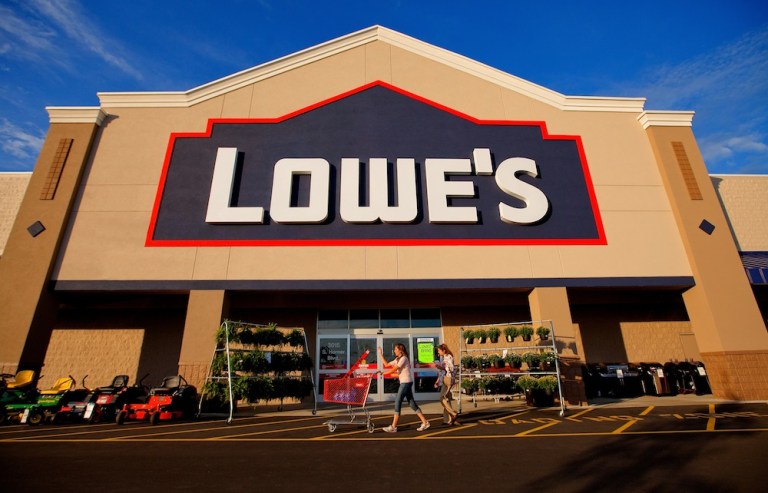
Investors were less than jazzed by Lowe’s latest earnings report, with a miss that came in below analysts’ expectations pre-earnings release. That displeasure was evident in Lowe’s stock price this morning (Feb. 28), which fell 8 percent on the news.
Still, other than the earnings miss, Lowe’s did show strength in a few other areas. Revenue clocked in at $15.49 billion, ahead of the $15.33 billion forecast. Same-store sales — often a critical metric in evaluating the success of a chain in any given quarter — grew 4.1 percent, again ahead of the 3.1 percent the Street was anticipating.
“As we enter 2018, we are working diligently to improve execution with a focus on conversion, gross margin and inventory management,” CEO Robert Niblock said in a statement. “Given the rapidly evolving competitive landscape, we are also accelerating our strategic investments, leveraging the benefits of tax reform.”
Although the retailer’s revenue number was a beat, it still represents a year-over-year decline of about 2 percent — Lowe’s just declined less than analysts were expecting.
Even the same-store sales beat had a bitter aftertaste. Lowe’s main rival for do-it-yourself (DIY) home maintenance, Home Depot, logged a 7.5 percent increase in same-store sales during the same period.
Home Depot, on the whole, had an overwhelmingly successful 2017, with a stock price that surged over 42 percent over the course of the year and big plans to inoculate itself against the Amazon effect with a major eCommerce push on deck for the next several years.
Experts on the Street noted the difference — though, notably, many still believe there’s hope for Lowe’s to catch up to its rival.
“Home Depot is a much better run company,” Oppenheimer & Co. analyst Brian Nagel told CNBC’s “Squawk Box.” “But as the dust clears today, I think there could be a positive in this [earnings report].”
Lowe’s is waging a fairly strong campaign as it tries to make sure it catches its share of the rising home improvement tide pushed by strong conditions in the U.S. housing market and the increasing transition of the millennial generation into home ownership mode.
Lowe’s — in an attempt to catch that fixer-up crowd — recently launched DIY mobile apps and augmented reality assistants to cater to a younger and more tech-savvy audience.
But Lowe’s also has what has been called an activist investor issue: D.E. Shaw & Co. is currently pushing the firm to perform better relative to its more successful and aggressive peers.
“In my view, the activist intervention with Lowe’s is long overdue,” Nagel said Wednesday, noting that the pressure should be able to move Lowe’s toward being “a much more aggressive” company, as it repositions itself in the market and the home improvement category.
Some of that improvement, however, may be costly in a way activist investors don’t like to see. The chain announced it will be pouring more capital back into its workforce via bonuses and an improved benefits package following U.S. tax reform. Lowe’s also plans to grow its supply chain by opening its first direct-to-consumer fulfillment center in Nashville, Tennessee.
The brand also announced an exclusive partnership with Valspar owner Sherwin-Williams, making Lowe’s the sole distributor in the home category of certain paint brands.
The home improvement retailer remains bullish on 2018, with revenue expected to grow by 4 percent and same-store sales expected to pick up 3.5 percent. Lowe’s also expects to open 10 new stores over the course of the year.
As of the close of the market yesterday, Lowe’s shares climbed more than 25 percent from a year ago.